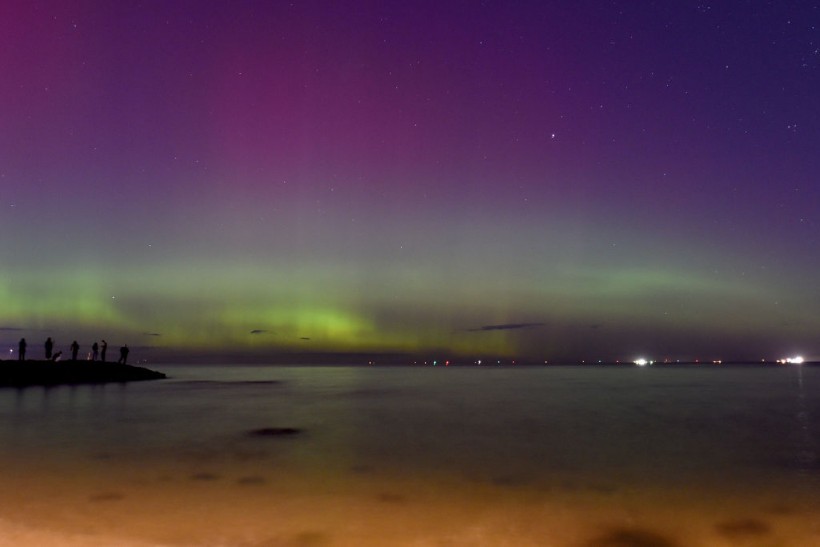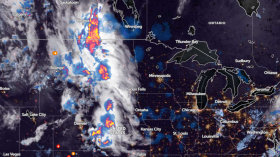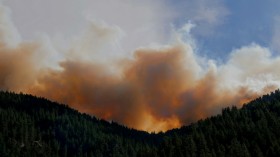Following a series of solar storms that struck our planet, Earth recently experienced its strongest geomagnetic storm in over 20 years.
The remarkable event triggers vivid aurora displays widely throughout Europe, the US, and even New Zealand (as the southern lights).
Solar Storms
The magnificent show of the northern lights illuminated the skies all around the world on Friday until the early hours of Monday.
The spectacular auroras that occur at night are caused by charged particles released by the sun colliding with gases in the Earth's atmosphere near the magnetic poles.
In the past few days, at least five solar storms-known as coronal mass ejections, or CMEs-slammed into Earth's protective field, causing a protracted disruption to the planet's magnetic field.
Last week, solar flares from a single, huge sunspot called AR3664-which is more than 15 times bigger than Earth-propelled these CMEs into space. Most of these flares were of the X-class, which is the strongest category of surface explosions that the sun can produce.
AR3664 was around the same size as the Carrington sunspot, which gave rise to the strongest solar storm in recorded Earth history.
Because Earth's protective field was momentarily compromised by the CME assault, charged solar particles were able to enter the atmosphere deeply and excite gas molecules.
These in turn produced vivid, multicolored auroras at latitudes significantly farther than usual from Earth's polar regions.
Auroras were visible throughout areas of Europe and as far south as Florida, Mexico, and Puerto Rico in the Northern Hemisphere. In the Southern Hemisphere, similar light displays were also observed at equally odd latitudes.
Read Also: NOAA Solar Storm Advisory: Potential Geomagnetic Storm Likely to Spark Auroras
G5 Category
The storm was predicted by scientists at the Space Weather Prediction Center (SWPC) of the National Oceanic and Atmospheric Administration to be a "severe" G4 disturbance, which is the second-highest class of geomagnetic storms.
But according to the SWPC statement, the disturbance went above and beyond earlier predictions, temporarily reaching the "extreme" G5 category at least twice during the weekend, on May 10 and May 11.
This is the first time Earth has seen G5 conditions since the Great Halloween storms of 2003, and it falls into the same category as the notorious Carrington Event of 1859.
G5 geomagnetic storms have the capacity to affect contemporary infrastructure by causing electrical grids to experience significant currents and by interfering with satellite communication signals.
The SWPC claims that in this instance, the worst consequences appear to have been a few small "power grid irregularities" and brief outages to GPS and other satellite systems.
Though uncommon, G5-class storms are more likely to happen during solar maximum, the sun's most active period, which lasts for around 11 years. Although scientists are unable to determine the precise start of this phase in real time, a few specialists think we have already reached the solar maximum.
Experts believe that solar storms will not get more intense and risky in the future.
Astrophysicist Hakeem Oluseyi said that scientists have discovered a pattern in the ongoing processes that occur on the sun's surface.
"Geological data shows us that in the past, the sun was way more active than it is today. It has cycles where it goes very quiet. and you have events that show that the solar activity was much, much greater. So there's no evidence that we're going to see those big maxima this cycle," he added
Related Article: SpaceX Rockets Create Red Auroras as They Punch Holes in the Ionosphere
© 2024 NatureWorldNews.com All rights reserved. Do not reproduce without permission.






